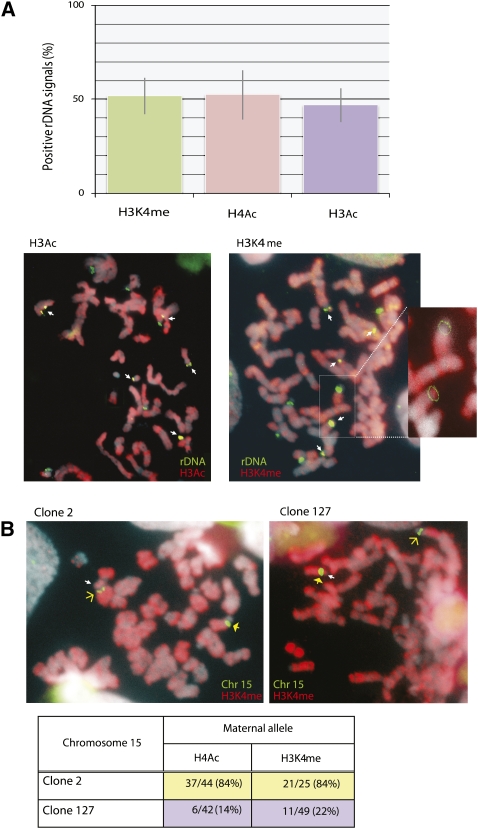Figure 4.
Visualization of histone modification on metaphase chromosomes. (A) Metaphase spreads from YC lymphoblasts were visualized by immunohistochemistry with fluorescent antibodies (red) either to H3Ac (left) or H3K4me (right). The magnified area presents the histochemistry signal underlying two rDNA loci, one positive and one negative for H3K4me. The number of rDNA sites colocalized (yellow) with H4Ac, H3Ac, or H3K4me were counted (n = 78) and presented in graphic form as the percent of the rDNA loci labeled with modified histones. Arrows indicate colocalization (yellow) of rDNA and H3Ac or H3K4me. (B) Metaphase spreads from human YC lymphoblast clones (2 or 127) were used for immunohistochemistry (red) with anti-H4Ac or anti-H3K4me and then hybridized with a probe for the centromere on chromosome 15. In this experiment, the centromeric region is small on the maternal allele (open arrow) and large on the paternal allele (closed arrow). In each nucleus, the H3K4me-positive allele (red) is labeled with a white arrow. These results, including the number of nuclei examined, are summarized in the table. The maternal allele is early-replicating in clone 127 and late-replicating in clone 2.

